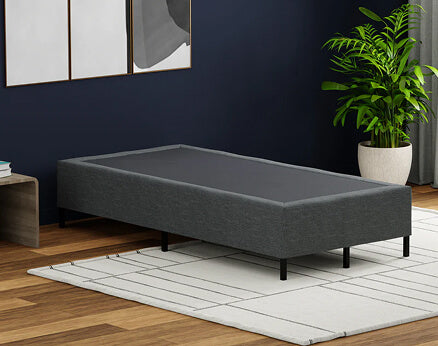Many of us need more instruction on supporting good sleep habits than on subjects like geometry. However, understanding the pillow positioning to maintain proper spinal alignment for better sleep is essential, particularly as we age.
If you're one of the many who struggle to fall or stay asleep, wake up feeling far from refreshed, or deal with discomfort in your neck, back, or shoulders, your pillow arrangement could be a significant factor. Don't worry, we're here to help. Learning the correct pillow placement for sleeping is crucial. Keep reading as we outline some effective pillow practices to enhance sleep quality, regardless of your preferred sleeping position.
What makes proper pillow placement important?
- It ensures you wake up feeling refreshed and avoids discomfort or pain.
- Maintaining proper spinal alignment aids in preventing long-term musculoskeletal issues.
- It promotes better blood circulation, minimizing numbness and tingling sensations.
- Eases neck, shoulders, and back muscle tension, promoting relaxation.
- It helps in preventing sleep disorders like sleep apnea and snoring.
The Correct Pillow Position for Side Sleepers
Side sleeping is the most common position, often the healthiest. While it may occasionally leave you with charming wrinkles on one side of your face, side sleeping offers numerous benefits. To optimize this position, consider the following tips for proper pillow usage:
- Choose a supportive yet soft pillow: Go for a lofted pillow that comfortably fills the space between your neck and the mattress. Avoid overly firm pillows that may strain your neck.
- Maintain a neutral head position: To reduce strain on your neck, keep your head in a neutral position, neither too far forward nor too far back.
- Place a pillow between your knees: A thick, firm pillow or body pillow between your knees will keep your hips aligned and prevent lower back strain.
- Support your waist with a small pillow: Placing a small pillow under your waist can help maintain spinal alignment and prevent excessive bending, particularly if your mattress sags, which promotes a more comfortable and restful sleep experience.
The Correct Pillow Position for Back Sleepers

Maximizing comfort for back sleepers involves strategic pillow placement and support. Here are some tips:
- Go for a thinner pillow: Choose a thin pillow with a lower loft to maintain a neutral neck position while lying on your back. Consider materials like feathers or buckwheat that offer support without elevating the head too much.
- Maintain a neutral chin position: Ensure your chin stays neither tucked into your chest nor pointed upward but aligned with the rest of your spine.
- Support your shoulders: Your pillow should support not only your head but also your shoulders. Ensure your shoulders rest comfortably on the pillow without elevating your head too much, which can cause discomfort.
- Use a small pillow under your neck: Consider using a contoured or smaller pillow to provide additional support for your head and neck. Alternatively, you can place a small round pillow or rolled towel under your neck for support.
- Place a pillow under your knees: Elevating your knees with a pillow can help ease lower back stress and mimic your body's natural standing posture.
- Surround yourself with pillows: If you're trying to train yourself to sleep on your back, use additional pillows to prevent yourself from rolling onto your side or stomach. Body pillows can be beneficial for this purpose.
The Correct Pillow Position for Stomach Sleepers
Stomach sleeping is generally discouraged for adults but can be suitable for those with respiratory concerns and acid reflux. If you prefer this sleep position, here are some tips to enhance your comfort:
- Pillow Placement for Pelvis Support: Sleeping on your stomach can cause the waist to tilt forward, increasing stress on the lower back. Place a pillow under your pelvis to help maintain proper spine alignment.
- Pillow Choice for Neck Support: A thick pillow can cause the neck to tilt back excessively, leading to discomfort. Select a thin, flexible pillow or consider skipping the pillow for your head entirely to keep your neck in a neutral position.
Adjusting your pillow placement and choice can reduce strain on your back and neck, making stomach sleeping a more comfortable experience.
The Correct Pillow Position for Combination Sleepers
Combination sleepers need a bit of everything for optimal sleep. If you rotate through different sleep positions at night, you’re a Goldilocks type, requiring a pillow that’s neither too firm nor soft but just right.
Look for a firm, supportive pillow yet flexible enough to adjust your movements. Although you may not know how you move during sleep, starting the night with proper head and neck alignment is essential. If you often switch to your side, keep an extra pillow within reach to place between your knees or under your pelvis for better body alignment and quick comfort.
How Pillow Positions Can Improve Your Sleep?

Choosing the right pillow improves sleep quality faster than you think. Pillow type and positioning are crucial for healthy rest.
Here are some ways the perfect pillow position can enhance your sleep quality:
- Sleep Disorders: Correct pillow usage can help ease sleep issues like snoring and sleep apnea. Memory foam pillows reduce snoring, indicating that sleep positioning and pillow type need further study to enhance sleep quality.
- Medically Necessary Pillows: Doctors often recommend special pillow adjustments, such as elevating angles to counteract heartburn and sinus problems or using custom pillow shapes to support CPAP use rather than neutral body positioning. They may also recommend specific cervical or latex pillows for physical therapy or other health conditions.
- Back Pain: Sleep-related back pain can disrupt sleep and leave you feeling sluggish in the morning. Using the correct pillow for your sleep style and positioning it correctly for your head and cervical spine aligns your body, improves posture, and reduces lower back pain.
- Comfort: Beyond physical health benefits, overall pillow comfort significantly impacts sleep quality. Feeling cozy and comfortable makes it easier to fall asleep, allowing you to complete full sleep cycles and wake up rested and refreshed instead of cranky, dizzy, and tired.
Focusing on pillow type and positioning can enhance sleep quality and guide you to a more restful night’s sleep.
Why Is Proper Pillow Position Important?
Pillow position may seem like a preference, but improving your sleep environment is crucial for better sleep quality. There’s a significant difference between tossing and turning all night due to discomfort and enjoying peaceful, uninterrupted sleep.
So, why is good sleep so important? Getting a complete, restful night’s sleep does more than make you feel refreshed for the next day. Sleep helps your body heal and rejuvenate while supporting essential life functions such as:
- Healthy metabolism
- Immune system reinforcement
- Cognitive function
- Heart and circulatory support
Creating the ideal bedtime environment—including a supportive pillow and mattress—helps you sleep deeply and comfortably, setting you on the right path to a successful, peaceful sleep.
Common Types of Pillows
There are many bed pillows, and choosing the right one can be challenging. Here, we’ll explore various pillow types, from fluffy down to supportive memory foam, to help you find the perfect pillow.
Down Pillows
Down pillows, often considered the epitome of luxury in bedding, are filled with the fluffy undercoating of a bird's feathers, usually from ducks or geese. These pillows offer that plush feel that down is loved for while tending to be less expensive.
Down Alternative Pillows
Down-alternative pillows are ideal for those who want the softness and support of down but are looking for a more affordable option. Typically made with synthetic fill like polyester. Dow Alternative Pillows imitate the feel of down while being hypoallergenic, making them an excellent choice for those with allergies or sensitivities.
Memory Foam Pillows
Memory foam pillows come in two types: memory foam and solid memory foam. Solid memory foam molds to your head and neck, providing excellent support, while memory foam clusters offer a more comfortable feel while still giving foam support.
Latex Pillows
Latex pillows are an excellent choice for a pillow with a bouncy feel and less contouring. They are also ideal for eco-conscious shoppers. The natural elasticity of latex pillow maintains its shape over time, offering durability and comfort.
Hybrid Pillows
Hybrid pillows combine foam and fiberfill. These pillows provide the supportive nature of foam and the plush comfort of fiberfill. Whether you sleep on your side, back, or stomach, a hybrid pillow can adapt to your sleeping style, offering a balanced blend of support and softness.
Understanding the different types of pillows available can help you find the perfect one to enhance your sleep quality and comfort.
Combine Your Pillow with a Supportive Mattress
Now that you’ve mastered the proper sleeping pillow position ensure your mattress matches up. Many features make a pillow perfect for a bedding set, so apply them to your mattress. When searching for the ideal mattress to meet your sleep needs, consider the following features:
- Firmness
- Support
- Comfort
- Breathability
- Cooling
While your pillow ensures your head and neck are properly supported, the best mattress for quality sleep aligns, relaxes, and comforts the rest of your body. Complete your sleep space with soft, cozy bedding that makes you want to keep hitting snooze when the sun rises.
Shop at Blissful Nights for The Best Quality Bed Pillows
Experience our pillows tailored for every sleep style—side, back, or stomach. Choose from luxurious down pillows, hypoallergenic alternatives, supportive memory foam, eco-friendly latex, or hybrid options that balance support and softness. Pair your perfect pillow with our supportive mattresses.
FAQs
What’s the best pillow for side sleepers?
The best pillow for side sleepers is slightly thicker and firmer. It fills the gap between your head and neck to align them with your spine. Memory foam and polyfill orthopedic pillows are good options. Place a pillow between your knees for extra support to align your hips.
What’s the best pillow for back sleepers?
The best pillow for back sleepers is medium-thick to keep the head, neck, and spine aligned without tilting the head back. Memory foam and contour pillows work well. Consider adding a pillow under your knees for extra back support.
What’s the best pillow for stomach sleepers?
The best pillow for stomach sleepers is soft and thin, or you can go without one to avoid neck strain. Place a pillow under your pelvis to keep your back neutral and reduce spinal pressure.






















Leave a comment
This site is protected by hCaptcha and the hCaptcha Privacy Policy and Terms of Service apply.